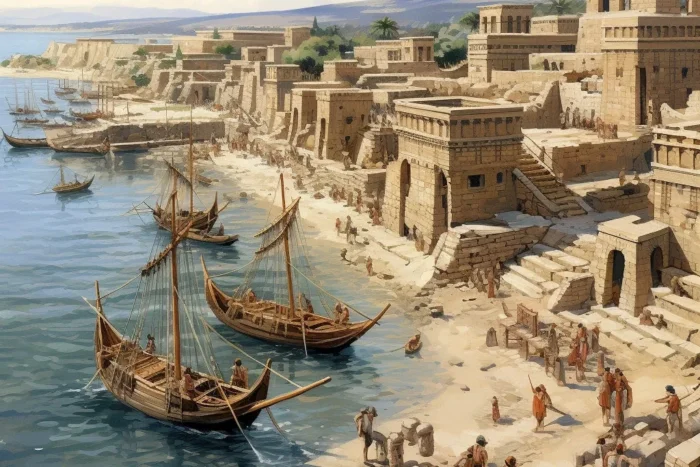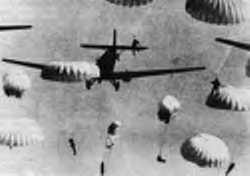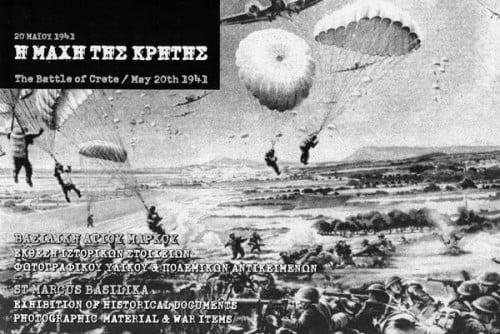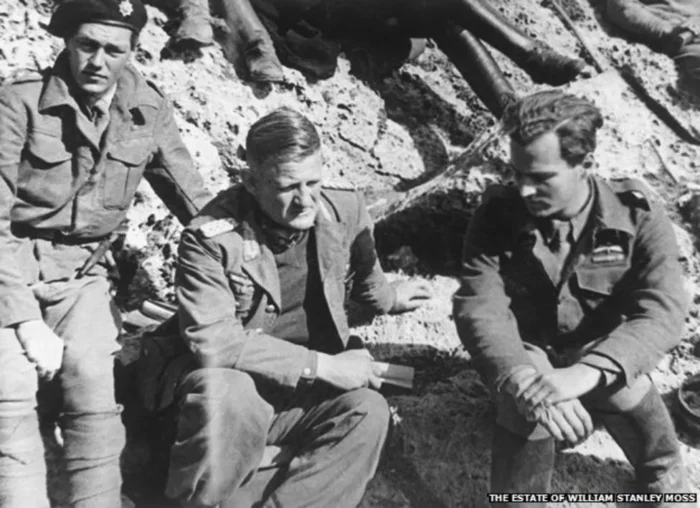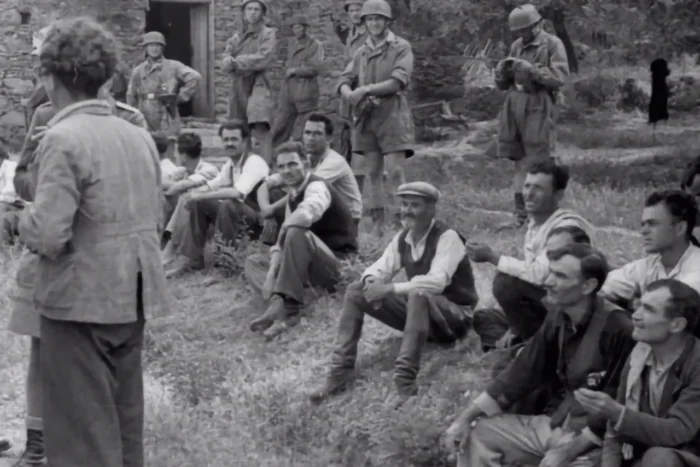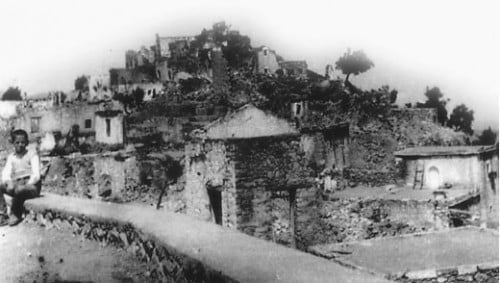Geoff Edwards, Veteran of the Battle of Crete
An Australian soldier’s story in World War 2
As a soldier of the 2/11th Battalion Australian Army, I found myself in April 1941 at the foot of snow clad Mt. Olympus trying to help the Greeks hold back the whole might of the German Army and Air Force. Greece, despite overwhelming odds was writing another page in its long glorious history by refusing Hitler’s demands to allow his forces through so they could reach the rich oil fields of the Middle East.
Hopelessly outnumbered, poorly equipped to fight such a mechanised army and under constant bombing we were forced through Larissa, Lamia and Thermopylae (Thermopylae Pass where 26 centuries before Leonidas had held the narrow pass) which became an ideal target for the Stukas dive bombers, and then back to Bralos and Corinth.
During this retreat many British, New Zealand and Australian troops were cut off and found themselves far behind the German lines. They were fed, sheltered and helped to escape to the free world by the Greek people, just as I was helped a few weeks later on Crete when Hitler landed his elite force the paratroopers who, after a bitter but costly struggle, gained control of the island.
I was left behind and taken prisoner at Sfakia on the south coast then marched back to a P.O.W. camp near Souda where, with a friend Bill McCarrey, watched the movements of the German sentries for a few nights and took a chance to escape through the barb wire. Then began the long trip back through the mountains to the south coast.
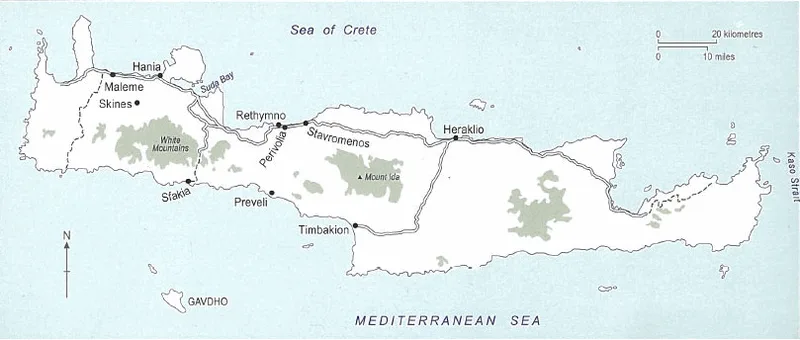
Being defeated we were doubtful about getting much help from the local people and in fact the first night we stole some food rather than contact them, for they were also under threat of death if caught helping British Commonwealth troops. But our fears were unfounded. We were fed by the villagers and guided through mountains by the shepherds. Some people even gave us money, but it was never needed as no one would take money for food, shelter and help provided.
Eventually, we reached the Preveli Monastery where the head monk Agathangelos Lagouvardos and the resistance leader Michael Papadakis had organised shelter in the surrounding villages for hundreds of British Commonwealth troops and even though they faced the death penalty for helping us, it made no difference to these brave, courageous Cretan villagers. As the Germans sent out patrols, so they shifted us from one area to another.
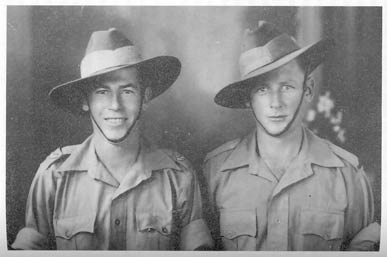
Most of us were taken off Crete by British submarines “Thrasher” and “Torbay“. We left the beautiful rugged island of Crete richer in feelings and memories of those indomitable Cretan people. We had been defeated in the field of battle and had nothing to offer them yet they risked their all, their very lives to help us when we badly needed help. They had so little yet gave so willingly. For this the men, women and children were to pay a terrible price in savage reprisals by the enemy.
Men like interpreter Vassilakis who, facing the firing squad, refused to be blindfolded and went to his death singing the Greek National Anthem – no wonder the island was never completely subdued. And now with the building of the white chapel on the hill overlooking the ocean and the village of Prevelly in the south west corner of Australia, we can pay tribute to these courageous Greek people, making sure their sacrifice was not in vain and their heroic deeds will live forever more.
How the troops were taken from Crete by HMS Thrasher
“Australia in the War 1939-45 Series 1 Greece, Crete and Syria” by Gavin Long
* an extract from the above mentioned book.
SINGLE- HANDED ESCAPE. One of the West Australians had made a single-handed escape. He was private Carroll who took a sixteen-foot Greek fishing boat which lacked even rowlocks or oars. He used a six-foot piece of driftwood as a mast, a fishing spear as a boom and a piece of bamboo as a peak, made a sail from a piece of light and ancient canvas found in a flour mill. He set sail from Crete on the night of 11th June 1941.
Next morning he was fired on by a German reconnaissance aircraft. He had intended to sail along the coast and find some companions, but after coming under fire at each attempt to return to the coast he set off alone for Egypt. He had six tins of chocolate and two gallons of water; the African coast was 350 miles away and he estimated that in a medium breeze his speed would be three knots.
Carroll made slow progress for six days. he wrote afterwards: “At dawn on the seventh morning a strong north-western blew up and by 10:00 hours had developed into a gale. I was obliged to alter my course and run before the wind. Up till then I had used (for a guide) a pen knife mounted on a piece of board. When the blade cast a fine shadow I knew I was heading due south. Sailing by night I used the north star as a guide.
For more than twenty-four hours I ran before the wind, surfing the waves which must have been twenty or thirty feet high. My eyes were giving me a lot of trouble, the left being badly affected gave me a blind side making it difficult to judge the waves. A little after sunrise I could see a haze in the sky to the south. Taking a chance I pushed the boat across the waves, it was quite a battle holding her against them, they were sticking me broadside on. The mast being a misfit began to kick from side to side. Twice I took a risk and left the tiller to brace it with floor boards but was nearly swamped.
Hoping the planks would hold out long enough, I kept on and sighted land about 08:00 hours. I gave her every bit of canvas she had, not caring a hang what happened now. About 10:00 hours she began to leak badly, forward on the port side. With still a good distance to go the water commenced to beat me; trying to bail and steer at the same time was impossible, I couldn’t keep my feet. Land appeared to be only a few miles off but it must have been nearer ten. When the boat filled and overturned and the mast smashed a hole in the bottom, my dreams of sailing into Alexandria went with it. Tying my tunic to the rudder clamps I fixed the water tin, almost empty now, across my shoulders and struck out for the shore.
It took me seven hours to reach land, swimming, floating and surfing. From the crest of the waves I could see the breakers pounding on the rocks and dashing spray feet into the air. This was about the closest call I’d had up to date and I had a terrific struggle to try and keep from being carried on to the rocks and retain hold on the tin. If I couldn’t find a place to go in, I thought it may serve to take the impact, giving me a chance to scramble clear before the next wave hit me.
Fortunately I was able to work my way along to a small patch of sand and came ashore, the breakers spinning me around in all directions. I had to crawl on my hands and knees, feeling too giddy to walk. I drank most of the water I had left, wrung the water out of my trousers, the only article of clothing I had, and started inland. I knew the road ran somewhere near the coast.
The ground was too rough on my bare feet, so I returned to the beach and headed east along the sand hills. After walking for about an hour I came across an air force listening post. The very dark chaps wearing blue peaked caps made me think I was in enemy territory but they turned out to be Maltese. A message was sent to control and the next morning I was taken to Mersa Matruh”
When he arrived in Egypt Carroll gave information that small parties of Australian and British troops were still at large round Agia Galini. As a result Lieu- Commander FJ Poole was landed in the area from a submarine late in July. He soon met Captain Jackson of the 2/11th who had let a party of five other officers and nineteen men of his unit to Preveli on the south coast. The next evening the submarine HMS “Thrasher” took off this party and as many other Australian, New Zealand, British and Cypriot troops as could be gathered in the time. (Geoff Edwards was amongst these troops).
One of the escapees, Lt Greenaway of the 2/11th, later made three voyages from Egypt to Greece in caiques, where he helped rescue several hundred soldiers and civilians. He also made one voyage to Crete where he rescued the Abbot of the Monastery of Preveli who, together with his monks, had fed the party to which Greenaway belonged during their long period in hiding.
Poole remained on Crete when Thrasher sailed, but it was arranged that a submarine would return on 18th August, by which time he was to collect another submarine-load of soldiers. Poole sent messages by trusted Greeks to several parties of troops learnt to be hiding in central Crete. To Sandover he sent the following cryptic (but effective) message ” Do you remember the young lady who swam naked to the Elafonisos Islands. The man who entertained you then is waiting to greet you now – follow this guide, he can be trusted.”
Sandover reached Poole after an 11-hour journey and was instructed to bring any parties he could find to Preveli. There on the nights of the 18th, 19th and 20th August 1941, more than 100 troops were taken off in the submarine “Torbay”.
Read more:
- Preveli Monastery
- Preveli Project
- Geoff Edwards Story
- Prevelly, Australia
- Escape by Submarine HMS Thrasher
- Battle of Crete
© explorecrete.com All Rights Reserved. Reproduction or copying without permission is prohibited.

